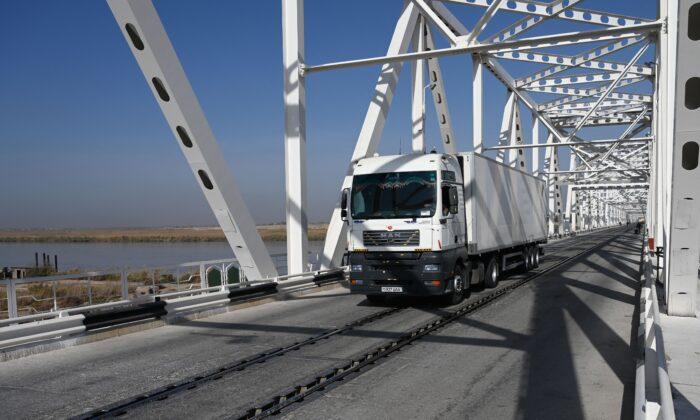With international aid to Afghanistan largely cut off, the Special Inspector General for Afghanistan Reconstruction (SIGAR) has released a report painting a dire picture of the country’s economic prospects since the Taliban took over.
Afghanistan’s economy had been projected to grow by about 0.4 percent at the start of the year, but economists now predict a roughly 9.7-percent contraction, the report stated.
Citing sources from the United Nations, the report warned that poverty in Afghanistan could increase by 7 to 25 percent between 2020 and mid-2022.
“The UN’s analysis further warns that Afghanistan could face the prospect of ‘near universal poverty' with around 97% of the population living below the poverty line,” the SIGAR report stated. “By September 2021, approximately 14 million people—or one out of three Afghans—were on the brink of starvation.”
Factors such as the COVID-19 pandemic and a summer drought predate the collapse of the Afghanistan government.
The economic outlook particularly dimmed when most international aid ceased in August, cutting off Afghanistan’s ability to finance its ballooning trade deficit, the report stated. The Department of State told SIGAR in October that the United States had ceased almost all aid to Afghanistan, other than some funding provided through the UN and nongovernmental organizations.
“Afghanistan’s economy has been highly dependent on imports, generating a severe trade deficit that was almost entirely financed through external aid.”
Sanctions have further shaken investor confidence in Afghanistan, leading to an outflow of U.S. dollars and causing the country’s currency to plummet, the report stated.
“The devaluation of the afghani (AFN) also impacts the Afghan economy, which could further diminish Afghan households’ ability to purchase food and other necessities,” SIGAR said of the country’s currency. “Since the collapse of the former Afghan government, the AFN has depreciated against the U.S. dollar, dropping from approximately 77 AFN to the dollar to around 90 as of October 8, 2021.”
However, the report stated that the country’s exports to major trade partner Pakistan rose by 142 percent from Aug. 16 to Sept. 30 compared to the period July 1 to Aug. 15.
“A customs official reportedly attributed this increase in trade from Afghanistan to a decline in the corrupt activities at the border crossings, such as government officials extorting drivers to pass into Pakistan with their goods, a practice that had inhibited trade.”
China could further brighten Afghanistan’s economic prospects as the relationship between the Taliban and the Chinese Communist Party (CCP) grows closer, the report stated.
The SIGAR report cited a Taliban spokesman who said in September that China would be the country’s main trading partner moving forward.
“We own rich copper mines, which, thanks to the Chinese, will be modernized. Finally, China represents our ticket to the markets of the world,” the spokesman said, according to the report.
Meanwhile, the report stated that SIGAR will continue to investigate the U.S. failures of the 20-year war in Afghanistan.
With members of both major parties in Congress calling for investigations, SIGAR said it has established task forces to probe questions such as what happened to the weapons, fuel, drones, planes, and other resources the United States provided to the now-defunct Afghan government.
SIGAR completed four audits over the past quarter that aim to help to answer these questions. One audit, for instance, found that U.S. officials weren’t checking to make sure the Afghan government was meeting criteria for receiving public aid.
“SIGAR found that [the United States] failed to hold [the Afghan government] to account by enforcing the conditions it established to create a stronger, more professional, and more self-reliant [government],” SIGAR said of its latest audit, the results of which are detailed in the quarterly report.
“As a result, DOD [Department of Defense] will never know if the [Afghan army] could have performed at a higher level in the wake of the U.S. withdrawal had DOD held them accountable for failures rather than simply performing tasks for them and providing funding regardless of actual progress,” SIGAR stated.
The report stated that SIGAR expects to complete its investigations in 2022 “and for the resulting reports to serve not only as forensic inquiries into the origins of the events of summer 2021, but also as useful cautionary and instructive guides to future contingency and reconstruction operations.”





Friends Read Free